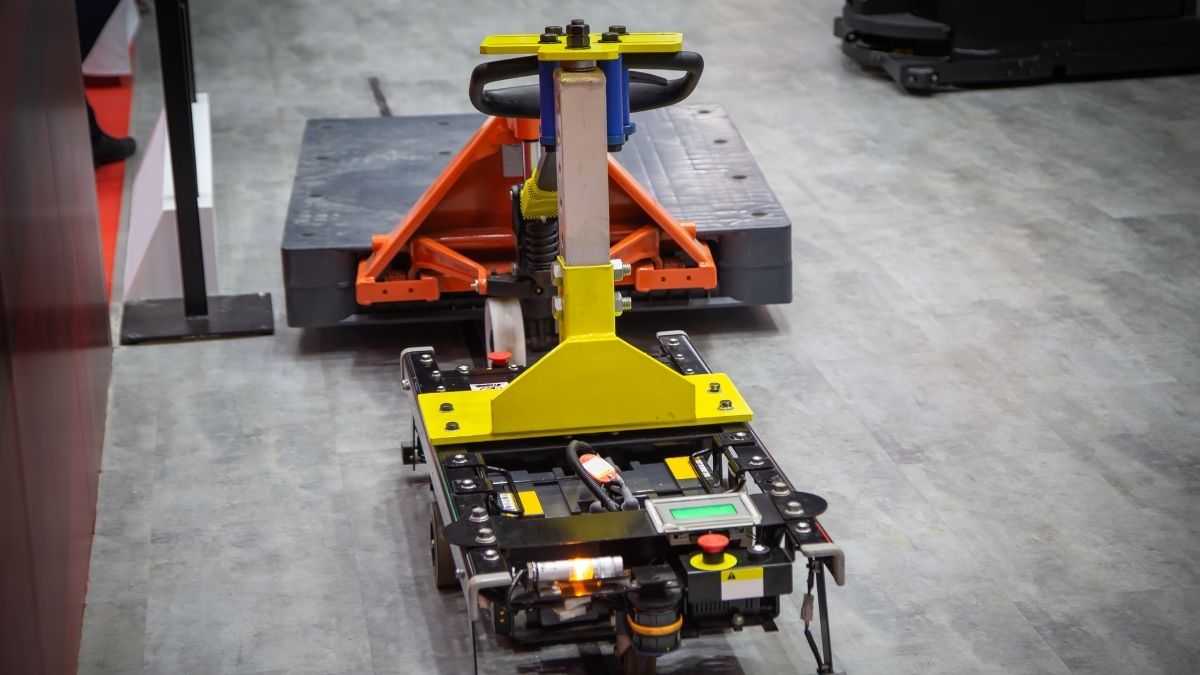Warehousing is an essential industry. But it’s also a dangerous one. Warehouses are notorious for having a devastatingly high injury rate, and it’s easy to guess why. Warehouse workers spend their days reaching, bending, lifting, and performing other arduous and dangerous activities that can cause strain and injury.
But what if we told you that warehouses don’t have to be inherently perilous? Improving warehouse ergonomics can dramatically reduce the likelihood of on-the-job injuries by making strenuous jobs less strenuous. Here are some ways to improve warehouse ergonomics and keep your hard-working employees out of harm’s way.
Reduce Package Handling
The packages and loads that warehouse workers carry around come in various sizes, shapes, and materials. A small package won’t do too much damage, but a large one can leave a worker with an aching back. For this reason, OSHA recommends that humans shouldn’t lift more than 50 pounds on the regular.
But what should you do if you have to move something that’s 50 pounds or heavier? You have two options. You can have multiple people move the load (which lessens the likelihood of injury but doesn’t eliminate it) or have a machine move it (it’s pretty hard to injure something that’s metal). LGVs (laser-guided vehicles) are a great option for warehouses that need to handle heavier-than-normal loads. AGVs, which are LGVs with fewer awesome lasers, are also an option.
Enforce Breaks
The next way to improve warehouse ergonomics is to enforce breaks. A lot of them. You’re already providing your employees with the one to three breaks a day required by law. But since warehousing is hard and back-breaking work, it doesn’t hurt to give your employees a few extra five-minute rest periods sprinkled throughout their shift.
These short breaks give your employees the chance to rejuvenate their aching muscles. They can close their eyes for a few minutes to reduce eye strain. Or, they could do some stretches to improve blood circulation and lower their risk of muscle cramps and stiffness.
Keep Machines at Waist Level
Remember how your parents would always tell you to not slouch? That’s because slouching places excess strain on your muscles, ligaments, and tendons, and can even shift the vertebrae of your spine out of alignment. Conversely, overextending your limbs can result in dislocated muscles and tendons and even serious nerve damage.
If the machines in your warehouse are too short or too high, your employees will be forced to bend down or stand on their tiptoes to use them. The solution is to ensure all machines are placed at waist level. But unless your employees miraculously share the same height, “waist level” means something different for everyone. How do you choose the best height for your machines, then? By consulting an ergonomics expert, of course!










 Deering Estate
Deering Estate
 Massage Envy South Miami
Massage Envy South Miami
 Calla Blow Dry
Calla Blow Dry
 My Derma Clinic
My Derma Clinic
 Sushi Maki
Sushi Maki
 Sports Grill
Sports Grill
 The Healthy Kitchen
The Healthy Kitchen
 Golden Rule Seafood
Golden Rule Seafood
 Malanga Cuban Café
Malanga Cuban Café

 Kathleen Ballard
Kathleen Ballard
 Panter, Panter & Sampedro
Panter, Panter & Sampedro
 Vintage Liquors
Vintage Liquors
 The Dog from Ipanema
The Dog from Ipanema
 Rubinstein Family Chiropractic
Rubinstein Family Chiropractic
 Your Pet’s Best
Your Pet’s Best
 Indigo Republic
Indigo Republic




 ATR Luxury Homes
ATR Luxury Homes


 2112 Design Studio
2112 Design Studio
 Hamilton Fox & Company
Hamilton Fox & Company
 Creative Design Services
Creative Design Services
 Best Pest Professionals
Best Pest Professionals
 HD Tree Services
HD Tree Services
 Trinity Air Conditioning Company
Trinity Air Conditioning Company
 Cisca Construction & Development
Cisca Construction & Development
 Mosquito Joe
Mosquito Joe
 Cutler Bay Solar Solutions
Cutler Bay Solar Solutions


 Miami Royal Ballet & Dance
Miami Royal Ballet & Dance
 Christopher Columbus
Christopher Columbus
 Pineview Preschools
Pineview Preschools
 Westminster
Westminster
 Carrollton
Carrollton
 Lil’ Jungle
Lil’ Jungle
 Frost Science Museum
Frost Science Museum
 Palmer Trinity School
Palmer Trinity School
 South Florida Music
South Florida Music
 Pinecrest Orthodontics
Pinecrest Orthodontics
 Dr. Bob Pediatric Dentist
Dr. Bob Pediatric Dentist
 d.pediatrics
d.pediatrics
 South Miami Women’s Health
South Miami Women’s Health

 The Spot Barbershop
The Spot Barbershop
 My Derma Clinic
My Derma Clinic




 Miami Dance Project
Miami Dance Project

 Rubinstein Family Chiropractic
Rubinstein Family Chiropractic
 Indigo Republic
Indigo Republic

 Safes Universe
Safes Universe
 Vintage Liquors
Vintage Liquors
 Evenings Delight
Evenings Delight





 Atchana’s Homegrown Thai
Atchana’s Homegrown Thai
 Baptist Health South Florida
Baptist Health South Florida

 Laser Eye Center of Miami
Laser Eye Center of Miami
 Visiting Angels
Visiting Angels
 OpusCare of South Florida
OpusCare of South Florida

 Your Pet’s Best
Your Pet’s Best





 HD Tree Services
HD Tree Services
 Hamilton Fox & Company
Hamilton Fox & Company


 Creative Design Services
Creative Design Services